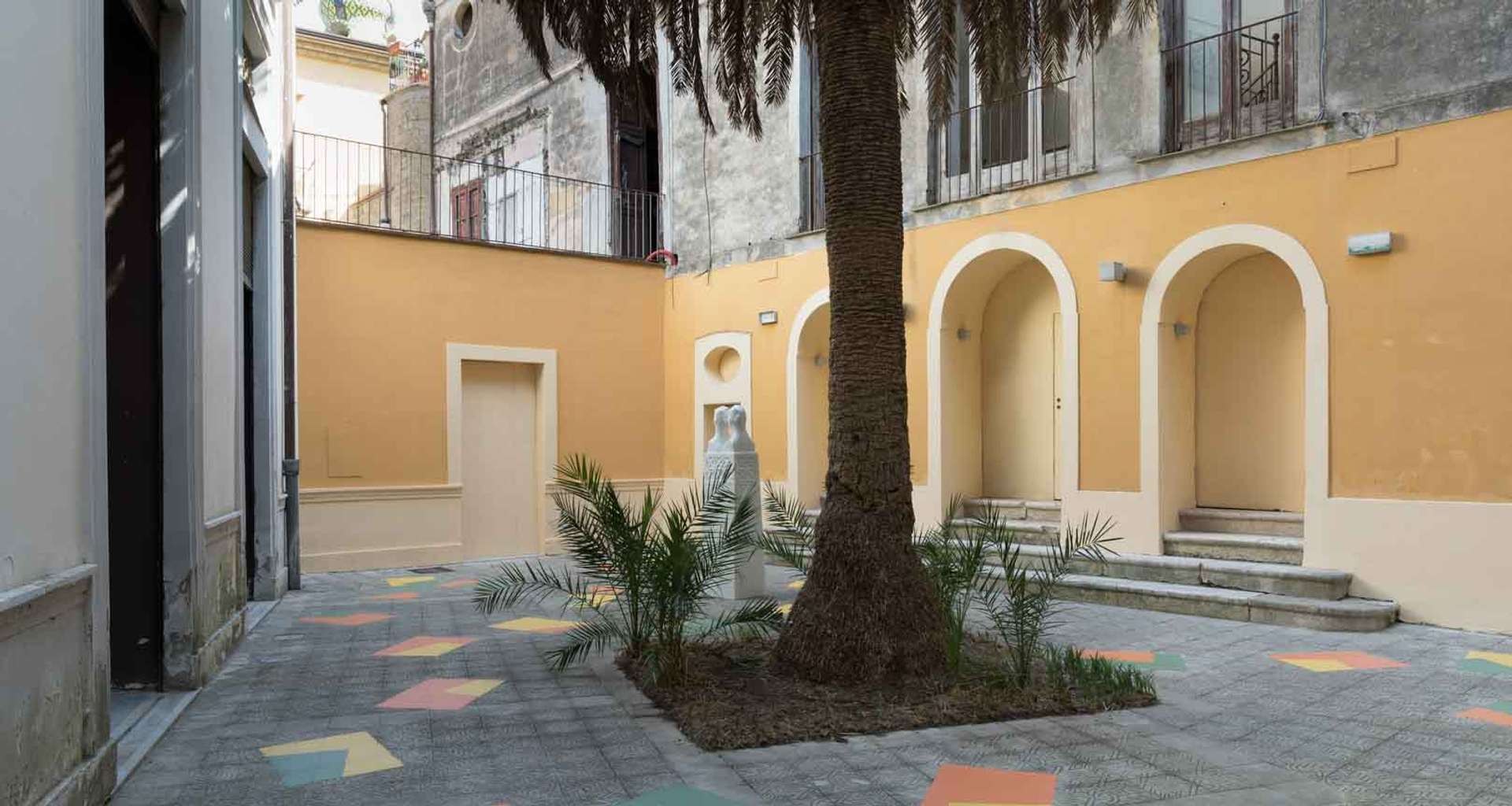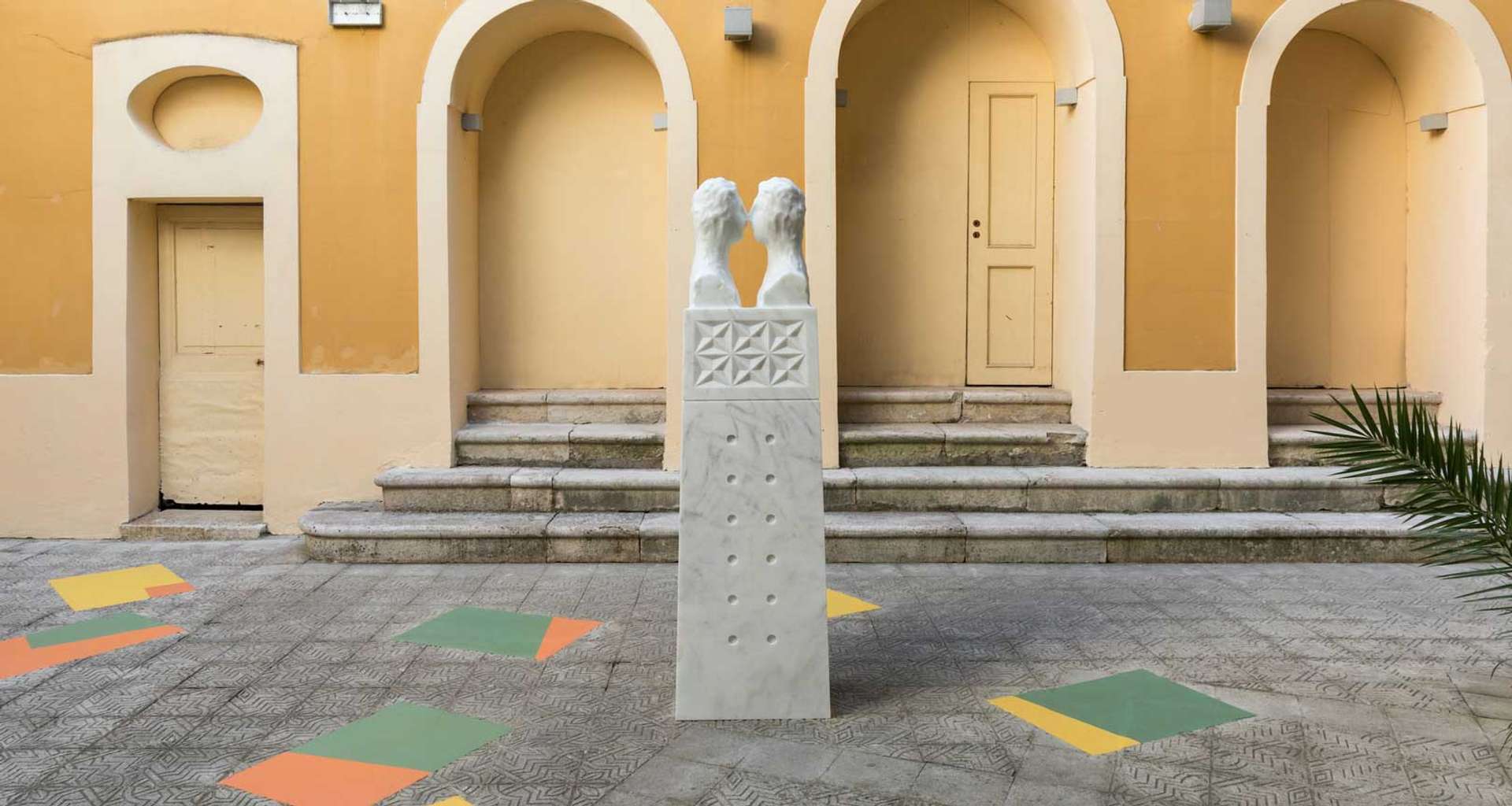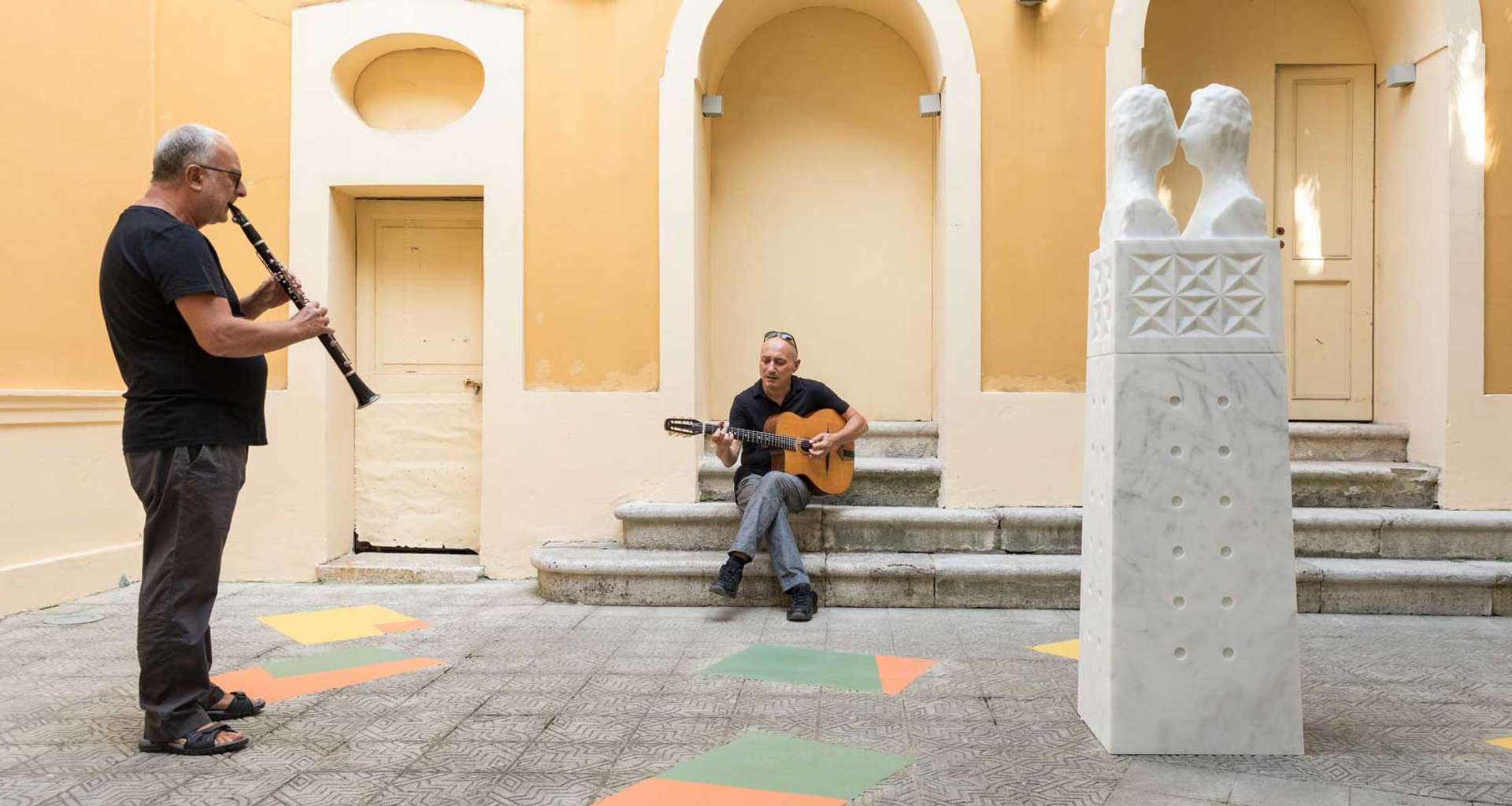The title is inspired by the Michelangelo Antonioni film L’eclisse, the score for which was composed by Giovanni Fusco, a native of Sant’Agata de’ Goti.
A marble sculpture seems abandoned in the cloister of the village’s former Historic Cinema. The crumbling space evokes the sense of desolation and loneliness that pervades the film.
The inherent inability to communicate between characters is represented by the two marble busts placed symmetrically, one in front of the other. The reference to memorial tradition is an ironic take on vanity – the idea that the celebration of greatness obscures the void behind it. It might be a hidden emptiness, like that of the tufa caves under the homes in the centuries-old village of Sant’Agata, or like the inner emptiness of the film’s protagonists, reflected in the deserted urban landscapes
AT SANT’AGATA DE’ GOTI, THE WORK "ECLISSE" REPRESENTS THE IMPOSSIBILITY OF MOVING BEYOND ONE’S OWN POINT OF VIEW AND THEREBY OF FULLY SEEING THE PERSON IN FRONT OF US
The decision of Valentina Ornaghi (Milan, 1986) and Claudio Prestinari (Milan, 1984) to work as a pair (from 2009) is based on a desire to develop each project through a constant dialogue of sharing. In our work, we elaborate on and incorporate references from the worlds of design, architecture and art history. We focus on various aspects of “material culture,” understood as the relationship between humans and objects, and how this relationship is related to the history of materials, their potential uses, planning, production techniques, and consumption. Through our poetics, we aim to add new value to familiar things. We seek to create coexistence and balance, to marry seemingly distant worlds, and to preserve polysemy. With practice, and through an everyday familiarity with materials, we challenge ourselves to acquire new skills. The final product is always the fruit of a refining process, and of working on a specific thing until it begins to speak
A MARBLE SCULPTURE SEEMS ABANDONED IN THE CLOISTER OF THE VILLAGE’S FORMER HISTORIC CINEMA. THE CRUMBLING SPACE EVOKES THE SENSE OF DESOLATION AND LONELINESS THAT PERVADES THE FILM "ECLISSE" OF MICHELANGELO ANTONIONI
Sant’Agata de’ Goti is in an evocative location on a “tufa terrace” between two tributaries of the Isclero river. According to the most credible historical sources, it is on the site of the ancient Saticula, a Samnite city on the border of Campania. Its current name dates back to the VI century A.D., when the Goths, defeated in 553 A.D. in the battle of Vesuvius, managed to remain in their fortresses as empire subjects, settling in as colonists. The local patrimony of heavily frescoed churches – there are about ten of them in the historic center alone – makes Sant’Agata a gem of art and culture. Some of the noteworthy churches in this lineup are the Duomo, which was founded in 970, rebuilt in the XII century and restored between 1728 and 1755; and the church of San Menna, with its calm, balanced interior, decorated with mosaics in opus sectile that are famous all over Europe. The Aqueduct Carolino, an UNESCO heritage site, crosses through the territory, picking up water at the strata of the Taburno mountain from Fizzo sources and then transporting it along a winding underground path about 38 kilometers long, eventually reaching the Reggia di Caserta.







